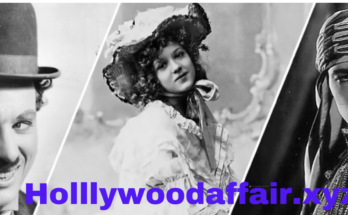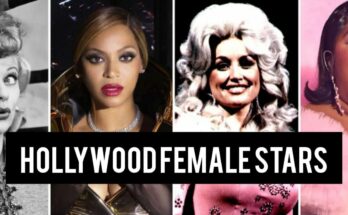Hollywood, the famous center of the film industry, has had an permanent affect on worldwide mold and culture all through the 20th century. From its early beginnings in the noiseless film time to the impressive Brilliant Age and past, Hollywood has been more than fair a center for narrating; it has molded the way individuals dress, carry on, and see the world. This advantageous relationship between Hollywood and worldwide mold patterns is apparent in how stars have directed design choices, how movies have showcased social shifts, and how whole businesses have advanced in reaction to the social dynamism of Hollywood.
The Rise of Hollywood and the Starting of Mold Influence
Hollywood’s impact on worldwide mold started in the 1920s, coinciding with the rise of the film industry itself. As noiseless movies picked up ubiquity, stars such as Mary Pickford and Gloria Swanson got to be family names. These stars not as it were characterized screen personas but moreover set design patterns. Some time recently the appearance of cinema, design was to a great extent impacted by eminence, blue-bloods, and tall society figures. In any case, as Hollywood developed, the highlight moved to film stars who brought an open and optimistic quality to fashion.
Costume architects like Adrian Adolph Greenberg (known essentially as Adrian) played a vital part in the early a long time of Hollywood’s impact on design. Adrian, who outlined outfits for stars like Greta Garbo and Joan Crawford, recognized that film advertised an uncommon stage to exhibit mold. One of his most popular plans was the broad-shouldered, cushioned suits worn by Crawford in the 1930s, which rapidly got to be a around the world drift. Hollywood’s capacity to mass-distribute pictures of impressive stars wearing the most recent patterns implied that these styles come to distant past American borders.
The 1920s and 1930s saw the rise of flapper design, which symbolized the freed lady. Movies highlighting stars like Clara Bow and Louise Brooks showcased brief weaved haircuts, dropped waistlines, and striking embellishments like cloche caps and long pearl neckbands. The casual however brave styles of Hollywood stars amid this time reflected the societal changes taking put, such as the women’s suffrage development and the move towards more loose sexual orientation roles.
The Brilliant Age of Hollywood: Allure and Tall Fashion
The 1940s and 1950s are regularly alluded to as the Brilliant Age of Hollywood, a period checked by the dominance of major film studios and the rise of impressive, notorious stars such as Marilyn Monroe, Elegance Kelly, and Audrey Hepburn. This time set Hollywood’s position as a worldwide design influencer.
During World War II, Hollywood proceeded to impact mold in spite of deficiencies in textures and materials. In truth, movies given a sense of idealism, and the luxurious outfits and custom fitted suits on screen advertised a differentiate to the down to earth and utilitarian clothing worn by the open. Ensemble architects like Edith Head, who won numerous Institute Grants for her work, were capable for making a few of the most notorious looks of the time. Head’s plans for motion pictures like *All Almost Eve* and *Sabrina* made a difference to set up the thought of film as a driving drive behind design trends.
Audrey Hepburn, in specific, got to be a mold symbol with her collaboration with French originator Hubert de Givenchy. Hepburn’s thin, boyish figure broke absent from the awe-inspiring perfect of the 1950s and motivated a unused, more present day stylish. Her part in *Breakfast at Tiffany’s* (1961), where she wore the popular small dark dress, pearl accessory, and larger than usual shades, has been cited as one of the most powerful mold minutes in cinematic history. This “Hepburn impact” popularized moderate and modern styles that proceed to impact mold creators today.
Marilyn Monroe, on the other hand, encapsulated the glitzy, stunner see of the time. Her white strap dress from *The Seven Year Tingle* (1955) got to be one of the most notorious pictures in pop culture, whereas her platinum blonde hair and ruddy lips impacted excellence measures over the globe. Monroe’s see symbolized a kind of hyper-femininity that was grasped in post-war America, setting patterns in mold, excellence, and indeed societal standards for decades to come.

The Swinging Sixties: Design Freedom and Counter-Culture
The 1960s brought almost seismic social and social shifts, with Hollywood reflecting these changes on the huge screen and impacting mold in the handle. As the counter-culture development risen, mold got to be more brave, energetic, and test. The gracious rights development, women’s liberation, and the anti-war development all contributed to a developing sense of disobedience, and this was apparent in the way individuals dressed.
Hollywood stars like Brigitte Bardot and Jane Fonda got to be images of this unused design ethos. Bardot’s easy, bohemian fashion with her tousled hair and casual clothing resounded with the free-spirited youth of the time. Her impact expanded past the silver screen, making waves in ordinary mold with things like the Bardot neck area, an off-the-shoulder plan that remains well known today.
Jane Fonda, in the mean time, showcased the edgier side of 1960s mold in movies like *Barbarella* (1968). The cutting edge and sexually freed ensembles planned by Paco Rabanne reflected the decade’s interest with space-age aesthetics and the releasing of ethical traditions. Hollywood’s grasp of striking, unusual design amid the 1960s reflected the social transformations taking put in Western society, cementing its impact on worldwide design trends.
The Seventies and Eighties: The Rise of the Blockbuster and Tall Fashion
In the 1970s and 1980s, Hollywood proceeded to set the design motivation as blockbuster movies got to be social occasions. Motion pictures like *Saturday Night Fever* (1977) with John Travolta and *Oil* (1978) brought disco and retro 1950s fashion into the standard, impacting mold patterns around the world. The disco period, in specific, saw a combination of excitement, glitz, and casual chic, with celebrities and ordinary individuals grasping strong colors, sequins, and flared pants.
By the 1980s, Hollywood design had gotten to be synonymous with overabundance and lavishness, reflecting the era’s developing fixation with riches and control. Movies like *American Escort* (1980) and *Working Young lady* (1988) showcased control dressing, with custom fitted suits, strong bear cushions, and originator names playing a central part in characterizing the “elitist” see. Richard Gere’s closet in *American Companion*, outlined by Giorgio Armani, is frequently credited with popularizing the smooth, advanced suit that characterized men’s mold in the 1980s. The film cemented Armani’s put as a worldwide mold powerhouse and set the association between Hollywood and tall design brands.
The 1980s too saw the rise of the design demonstrate as a Hollywood star, with models like Cindy Crawford, Naomi Campbell, and Linda Evangelista making the move from the runway to the silver screen. This time obscured the lines between Hollywood performing artists and design symbols, with creators effectively looking for collaborations with celebrities to grow their brands’ reach.
The Nineties and Past: Ruddy Carpets and the Globalization of Hollywood Fashion
As the 1990s rolled around, Hollywood’s impact on design got to be indeed more articulated, much obliged to the rise of the ruddy carpet wonder. Grants appears like the Oscars and the Brilliant Globes were not fair around celebrating movies but too approximately exhibiting tall mold. Stars like Julia Roberts, Gwyneth Paltrow, and Nicole Kidman turned the ruddy carpet into a worldwide runway, with their style choices being analyzed, replicated, and celebrated around the world.
The ruddy carpet got to be an basic stage for architects to exhibit their manifestations, and Hollywood stars were the perfect brand ministers. For illustration, Gwyneth Paltrow’s pink Ralph Lauren outfit at the 1999 Oscars and Halle Berry’s Elie Saab dress at the 2002 ceremony are still considered two of the most famous ruddy carpet looks of all time. These minutes not as it were affected what was considered in vogue but moreover made a difference lift architects to worldwide fame.
By the 2000s, Hollywood’s design impact had ended up a worldwide marvel, much appreciated to the expanding control of the web and social media. Stars like Jennifer Lopez and Beyoncé utilized their celebrity status to set patterns that resonated around the world. The rise of reality TV stars like Kim Kardashian assist cemented the mixing of Hollywood allure with ordinary mold, making a modern kind of social influence.
Hollywood’s Bequest in Design and Culture
As the 20th century came to a near, Hollywood had cleared out an permanent check on worldwide mold and culture. The advantageous relationship between the film industry and the mold world had advanced into an ever-present cycle of impact and motivation. Nowadays, celebrities stay a few of the most effective mold influencers in the world, with millions of individuals looking to Hollywood for fashion inspiration.
Hollywood has not as it were managed what individuals wear but has moreover molded broader social stories around excellence, sexual orientation, race, and character. From the exciting symbols of the Brilliant Age to the defiant stars of the 1960s and 1970s, Hollywood has ceaselessly re-imagined mold measures and social standards. Indeed as mold gets to be more globalized and democratized in the 21st century, the bequest of Hollywood’s impact remains undeniable.
In pith, Hollywood’s impact on worldwide design and culture in the 20th century was far-reaching and transformative. By bringing mold to the masses, displaying societal shifts through clothing, and continually reclassifying magnificence benchmarks, Hollywood has until the end of time changed the way we see and connected with the world of design. Its bequest proceeds to shape the patterns of nowadays, guaranteeing that the association between design and film will stay a foundation of prevalent culture for eras to come.



